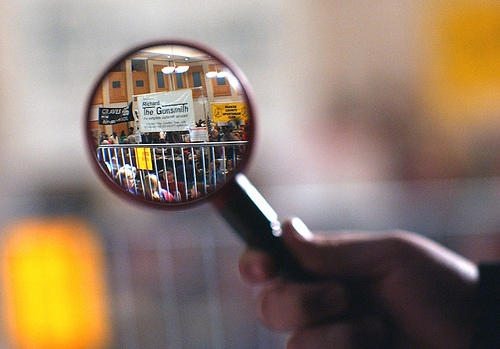By Stephen Franklin
You have the facts. You have the documents. You have an investigative story that is new and important and revealing.
But do you have a story to tell?
You may done all of the difficult work needed to investigative an issue, but if you can’t tell your story effectively, then your work will suffer. Your audience will be limited. Your impact will be diminished.
How do we make our work draw attention, and ring bells?
Some basic suggestions
Create a lead that will draw your audience onward. This is especially important when so much journalism appears on the Internet, where readers quickly lose their patience.
You have several options. You can create a highly personal lead, a beginning that sets the scene very powerfully. It is important here only to provide the most basic details. You will unravel the complete details later on. But here you want to you use words like paint, creating a striking image.
To do this, you need to think over the heart of your reporting and what image most powerfully and honestly tells readers what you have found. Do not create images that are sensational just for the sake of creating a powerful beginning. Your beginning should be honest and it should come from your reporting. Winning trust in your reporting is very critical and a beginning that seems untrue will damage this.
Here, for example, is the beginning of a story from an Iraqi newspaper that exposes the use of bogus or ineffective medicines.
“Bikhal, a young Kurdish woman, knows she may not live to see another spring. The leukemia that has ravaged her body since she was treated with defective chemotherapy drugs at a hospital in Iraqi Kurdistan has reduced her to a ghost of her former self.

“The 25-year-old gazes at the leaves falling from the plum tree in the courtyard of her home as her father, Hajj Saleh, relates her experience with the bogus medication that wrecked her chance of being cured of this deadly illness. A few days after it was administered at a government hospital, doctors informed her that recovery in Kurdistan had become “impossible.”
Bikhal’s father did his best to seek redress, even going to the courts to bring the wrongdoers to justice.”
Once you have led your readers into the opening scene, you need to quickly explain your findings. You sum up what you have found, and then set out to provide your facts and your proof. If you can return to your beginning scene at your ending, you will have created an arc. That is, you will have drawn your reader back to remembering the person or scene that captured their attention and their concern.
But there are other ways to begin.
You can spread out your key findings at the beginning of your report. Then you proceed to offer examples. The secret is not to overwhelm your audience with too many facts. You need to tell the story as if every word has been nailed into place. This is true in print and it is especially true in an audio or video presentation. Notice how quickly the words move here, bringing your audience to the heart of the reporting. This is collaboration between a print and TV investigative effort. Also notice the pause after the facts are laid out, and a short sentence that explains why this matters.
“Armed security guards have become a ubiquitous presence in modern life, projecting an image of safety amid public fears of mass shootings and terrorism. But often, it’s the guards themselves who pose the threat.
“Across the U.S., a haphazard system of lax laws, minimal oversight and almost no accountability puts guns in the hands of guards who endanger public safety, a yearlong investigation by The Center for Investigative Reporting and CNN has found.
“Men and women who have never fired a gun in their lives can set off on patrol in uniform, wearing a badge and carrying a loaded weapon, with only a few hours of training, if any. In 15 states, guards can openly carry guns on the job without any firearms training at all.
“The results can be as tragic as they are predictable.”
But there are other patterns that produce the same results. One of them is to begin with a scene or a situation that creates a mystery. For example, “When they found Ahmet’s body, they could see he had been operated on. But who did it, and why?”
For the rest of your reporting, you go through the facts and the issues so that when you reach your conclusion, readers clearly see your explanation. For example, “He died because of a system that allowed untrained and unsupervised staff in unregulated facility to take chances. But he never had a chance.”
Rely on images or powerful quotations whenever possible to tell your story. Make sure you have explained early on why your reporting matters. That is, what is the context for this reporting. Never ignore or withhold claims that counter your reporting. If you deal with them early in your presentation, you are sending the message that you are honest, and that you will offer the other side to these claims.
And most importantly, imagine that your presentation is a piece of music. You want to keep it moving forward and not lslow down too much, or lose the pace that makes it something that cannot be ignored.
